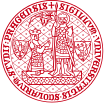


Institute of Formal and Applied Linguistics
Charles University, Czech Republic
Faculty of Mathematics and Physics
What relative pronoun morphology reveals about relative clause typology
Radek Šimík (ÚČJTK FF UK)
In many languages, relative pronouns can be identical to their interrogative kin (cf. English who – who, Czech který – který ‘which’, etc.). However, at least two more patterns are attested, one where relative pronouns are morphologically derived from interrogative ones (Bulgarian koj – kojto ‘which/who’, Slovenian kje – kjer ‘where’) and one where the two share a common derivational stem (Hindi ko – jo ‘which’, German was – das ‘what/ which’). (Notabene: Interrogative pronouns are never derived from relative ones.) At the same time, not all kinds of relative clauses behave alike. While in Bulgarian, relative pronouns are used in all kinds of relatives (correlatives, free relatives, headed relatives), German relative pronouns (e.g. das) are reserved for headed relatives, while correlatives and free relatives make use of the interrogative form (e.g. was). A detailed cross-linguistic investigation reveals a systematic implicational pattern along the hierarchy in (1): if a morphologically specific relative pronoun is used for some construction in (1), the same form is used for all the constructions to its right.
- interrogative > unconditional > correlative > free/light-headed relative > headed relative
As it turns out, the hierarchy in (1) is relevant not just for morphology, but for other grammatical domains as well, including syntax (wh-movement) and diachronic development. I provide a morphosyntactic and semantic analysis of the individual constructions which sheds light on the hierarchy in (1).
***The talk will be streamed via Zoom. For details how to join the Zoom meeting, please write to sevcikova et ufal.mff.cuni.cz***